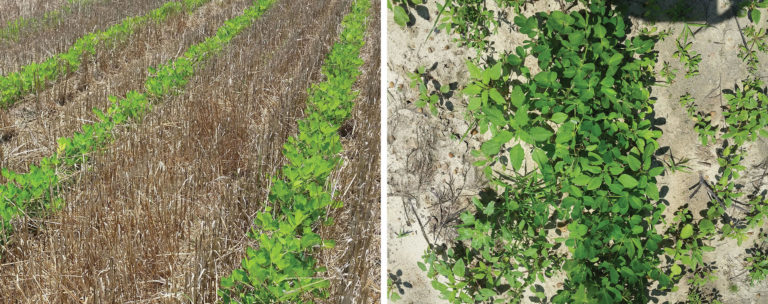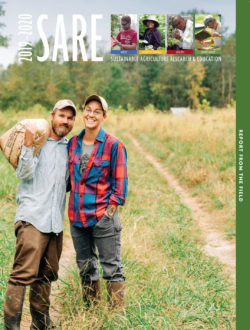"We feel interseeding has real potential, and thanks to SARE, we were able to demonstrate its efficacy and encourage its use in South Carolina."
Dan Anco, Clemson University
THE CHALLENGE
Commodity growers in the southern United States face relatively new production problems that can affect farm profits and threaten soil health. Many come in the form of pests, which thrive in southern climates. Herbicide-resistant weeds are difficult to manage, often forcing growers to adopt more expensive control strategies. Insects further reduce revenue and add to production costs. Cotton producers, for example, lost an estimated $100 million to thrips between 2008–2010. Then there are the nematodes, which cause losses in the hundreds of millions of dollars for soybean, peanut and cotton growers. And on top of pests, there is the increasing cost of fuel— sometimes accounting for more than 30% of tractor ownership and operation expenses. Innovative production methods are needed, and a promising SARE On-Farm Research grant has demonstrated that interseeding (planting one crop into a second crop ahead of harvesting the second crop) has the potential to help address these new problems.

THE ACTIONS TAKEN
A team from Clemson University set up a demonstration project on four farms to showcase the advantages of interseeding technology in rotations with cotton, peanuts, soybeans and wheat. Interseeding can enhance soil properties and farm profits while reducing fuel costs and consumption, and pest occurrence. To assist their farmer partners, the team modified preexisting farm equipment to allow for interseeding, provided training and support to ensure its proper use, and then implemented a training program to spread the word about interseeding technology to others.
Equipment modifications included adjusting conventional grain drills and a vacuum planter in unique ways to suit different types of planting without requiring additional labor or machinery. The on-farm demonstration sites were planted with skip-row wheat, with soybeans, cotton and peanuts being interseeded later into the standing wheat. One research site featured insect, nematode and weed treatments to compare the effect of interseeding on pest incidence. Yields were evaluated at harvest and soil samples were analyzed. Another site included a two-year study of how interseeding and various irrigation strategies influenced peanut yields.
THE IMPACTS
The project generated new information and helpful strategies for farmers interested in adopting interseeding as a production practice. Specific impacts include:
- Promising results: Interseeding had a positive or neutral effect on crop yields, reduced weed densities and nematode populations, increased revenues from the wheat harvest and increased plant-available nutrients in the soil.
- Farmer adoption: The four participating farmers learned to modify their existing equipment to incorporate interseeding into their production without requiring additional costs or new machinery.
- Broad engagement: The team shared project results with 800 farmers and 150 agriculture professionals across South Carolina through field days, workshops and grower meetings.
Visit the database of project reports to learn more about this SARE-funded project: OS16-093.
